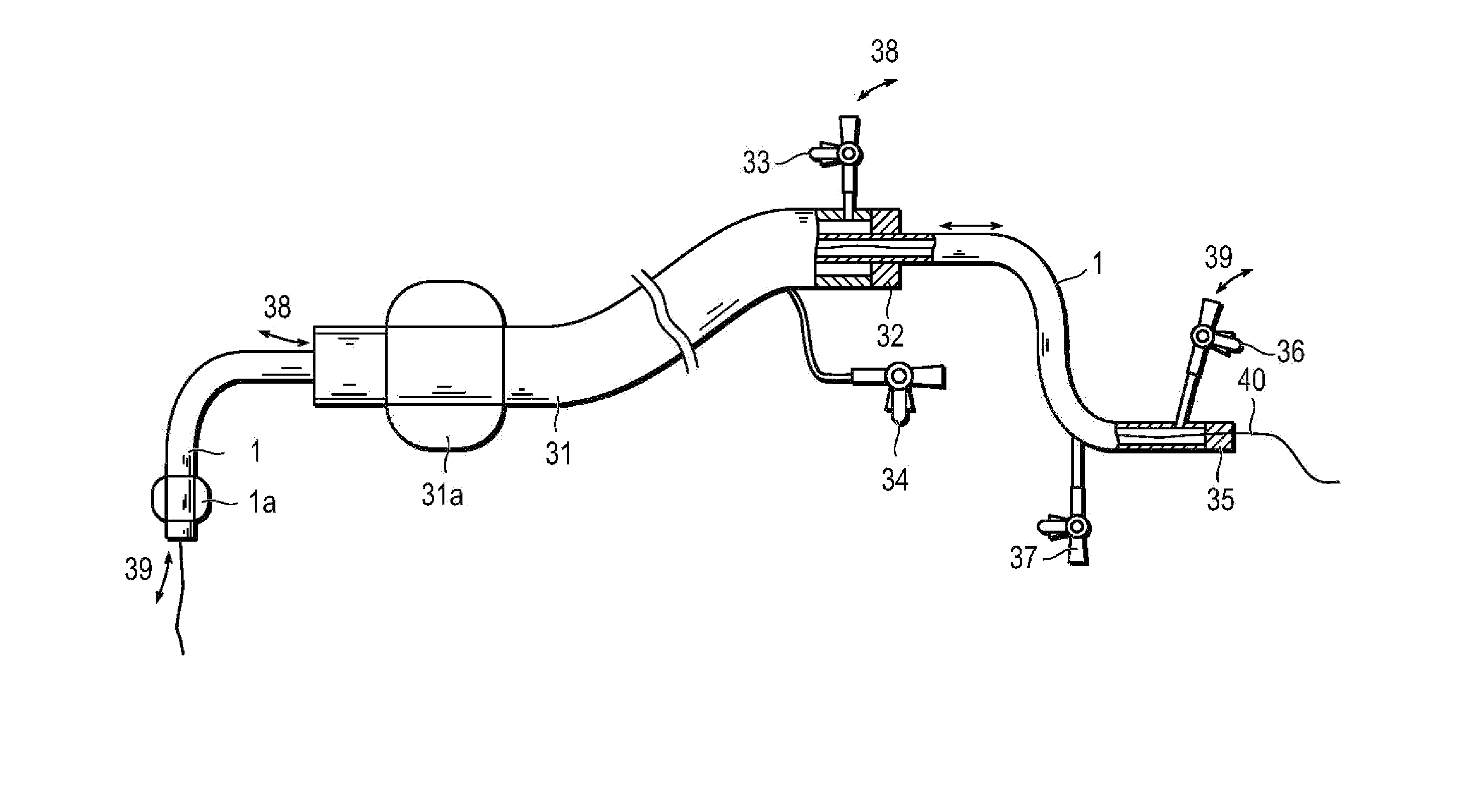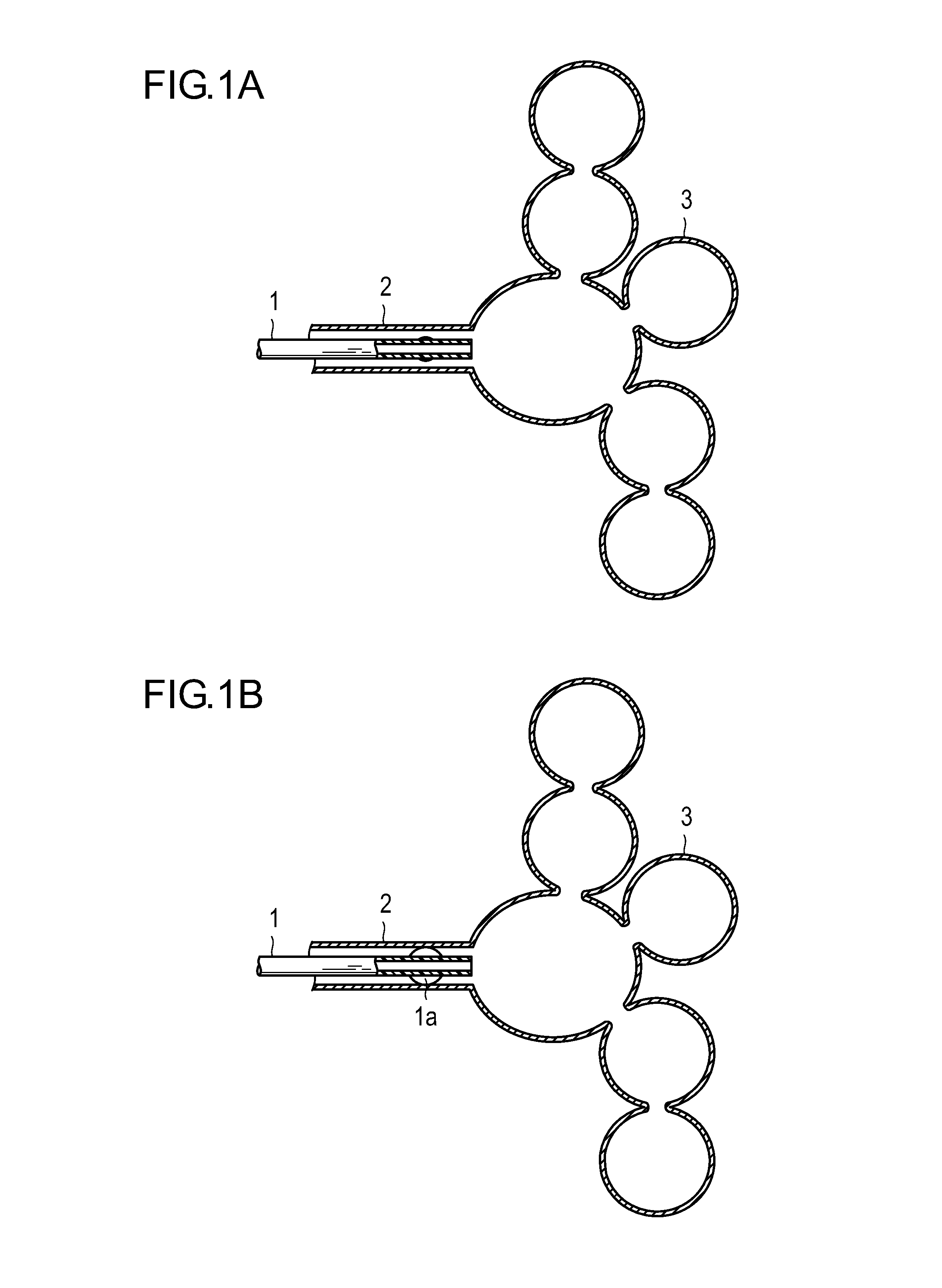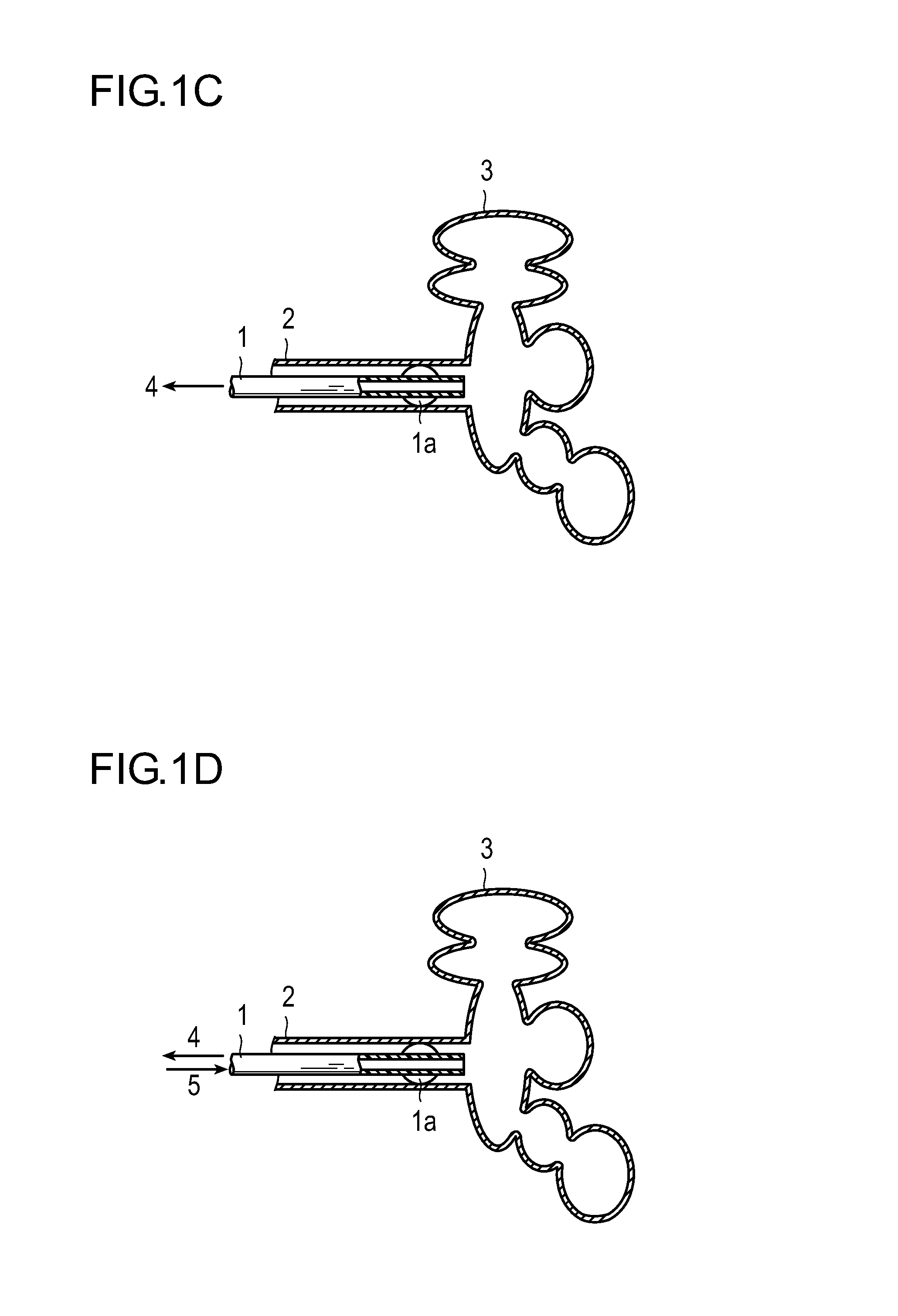Method for treatment of emphysema
a technology for emphysema and pulmonary artery disease, applied in the field of emphysema treatment, can solve the problems of difficult to confirm in each case which one is satisfactory, inhibit satisfactory expiration, lung occlusion, etc., and achieve the effect of less-invasive reduction of the volume of pulmonary artery or alveolar sac suffering
- Summary
- Abstract
- Description
- Claims
- Application Information
AI Technical Summary
Benefits of technology
Problems solved by technology
Method used
Image
Examples
example 1
[0076]As shown in FIG. 1A, an OTW-type PTCA balloon catheter 1 [Ryujin Plus OTW (registered trademark); Medical Instrument Approval Number: 21600BZZ00035; made by TERUMO CORPORATION] for use in treatment of stenosis of blood vessel lumen in a cardiovascular region was inserted through a working lumen (not shown) of a bronchoscope into the lumen of a bronchiole 2. Here, a guide wire [Runthrough (registered trademark), made by TERUMO CORPORATION] (outside diameter: 0.014 inch) was preliminarily inserted into the working lumen of the bronchoscope. The distal end of the guide wire was advanced into the vicinity of a desired alveolar parenchyma 3 suffering from emphysema under X-ray fluoroscopy. Next, a catheter was advanced through the function of the guide wire into the vicinity to the desired alveolar parenchyma 3 suffering from emphysema under X-ray fluoroscopy, followed by pulling out the guide wire.
[0077]Subsequently, as shown in FIG. 1B, using a syringe connected to a balloon part...
example 2
[0082]As shown in FIG. 2A, a microcatheter (for example, FINECROSS (registered trademark), made by TERUMO CORPORATION) 1 was inserted through a working lumen (not shown) of a bronchoscope into the lumen of a bronchiole 2. Here, a guide wire [Runthrough (registered trademark), made by TERUMO CORPORATION] (outside diameter: 0.014 inch) was preliminarily inserted in the working lumen of the bronchoscope. The distal end of the guide wire was advanced into the vicinity of a desired alveolar parenchyma 3 suffering from emphysema under X-ray fluoroscopy. Next, a catheter was advanced through the function of the guide wire into the vicinity of the desired alveolar parenchyma 3 suffering from emphysema under X-ray fluoroscopy, followed by pulling out the guide wire.
[0083]Subsequently, as shown in FIG. 2B, using an indeflator connected to a balloon part dilating lumen disposed at a proximal portion of the catheter 1, a balloon 1a was dilated with air, thereby closing a bronchiole 2. As shown ...
PUM
 Login to View More
Login to View More Abstract
Description
Claims
Application Information
 Login to View More
Login to View More - R&D
- Intellectual Property
- Life Sciences
- Materials
- Tech Scout
- Unparalleled Data Quality
- Higher Quality Content
- 60% Fewer Hallucinations
Browse by: Latest US Patents, China's latest patents, Technical Efficacy Thesaurus, Application Domain, Technology Topic, Popular Technical Reports.
© 2025 PatSnap. All rights reserved.Legal|Privacy policy|Modern Slavery Act Transparency Statement|Sitemap|About US| Contact US: help@patsnap.com



